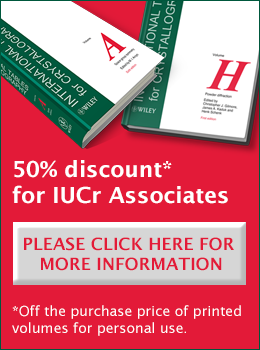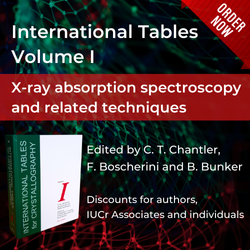
Crystallography in Africa
Bringing crystallography to the classroom: Kenyan teachers learn to engage students in the wonders of crystals
![Figure1 [Figure1]](https://www.iucr.org/__data/assets/image/0004/158647/fig1.jpg)
Figure 1. Group photo of participants during the opening of the teachers' training workshop on 29 November 2023 (copyright UoN and CSIC). Front row, left to right: Martin Mbugua (Senior lecturer, UoN), David Kamau (Chairman, Department of Chemistry, UoN), Stephen Kiama (Vice Chancellor, UoN), Ms Natalia Suarez de Puga Canosa (Consul-Spanish Embassy to Kenya), Juan Manuel García-Ruiz (CSIC-University of Granada), Fermín Otálora (CSIC-University of Granada) and Solomon Derese (UoN).
Over three days in late November 2023, high-school teachers from across Kenya gathered at the University of Nairobi (UoN) for an immersive training workshop on using crystallography to teach science in an engaging, hands-on way.
The workshop, entitled Learning How Science Works with Crystals, was led by renowned crystallography experts Professor Juan Manuel García-Ruiz (Donostia International Physics Center and the Instituto Andaluz de Ciencias de la Tierra-CSIC, Spain) and Dr Fermín Otálora (Instituto Andaluz de Ciencias de la Tierra-CSIC, Spain). Through a blend of informative talks, engaging videos, captivating demos and hands-on practical activities, the teachers were immersed in the fascinating world of crystallography, crystallization and the practical applications of crystals and crystallographic techniques in everyday life.
'Crystals provide a visual, tangible way to illustrate core scientific concepts in chemistry, physics, biology, biomedicine, engineering, mathematics and the arts,' said García-Ruiz. 'By giving students the ability to grow and examine crystals themselves, we can spark their curiosity and help abstract principles come to life.'
A highlight was the crystallization kit – a simple set of materials teachers can use to guide students through growing crystal structures from solutions and gels. Seeing these crystals take shape allows students to witness the dynamics of molecular interactions first-hand.
![[Figure2]](https://www.iucr.org/__data/assets/image/0005/158648/fig2.jpg) Figure 2. Interactive training on crystallography (copyright UoN and CSIC).
Figure 2. Interactive training on crystallography (copyright UoN and CSIC).
The workshop also introduced the Spanish Crystallography Contest for Schools, which challenges students to design and conduct crystallization experiments, explore how to grow large and better crystals, or search for crystalline and polycrystalline materials with specific properties. A diversity of Kenyan schools will now have the opportunity to participate in the Africa Education Program for the Crystallisation Contest in Schools.
Science teachers commented on the workshop: 'These kinds of immersive, practical learning experiences are invaluable. We cannot wait to set up crystallization activities in our own classrooms and watch students' fascination as they explore the hidden worlds of crystal formation.'
The workshop was organized by Dr Solomon Derese, Dr Patricia Gitari, Dr Joey Kiano, Dr Martin Mbugua, Dr Fermín Otálora and Professor Juan Manuel García-Ruiz under the auspices of the Consejo Superior de Investigaciones Científicas, UoN and the Spanish Embassy.
Students from various public and private schools in Kenya are now hard at work learning the secrets of crystallization, understanding the importance of crystals and enjoying their beauty. The final contest is scheduled for September 2024 after ECM34. A display of an African version of the exhibition CRISTALES is also planned. In addition to strengthening science education, the workshop aimed to foster connections between Kenya and Spain in scientific research and knowledge exchange. Representatives from both nations' governments attended and voiced their support for such collaborative initiatives.
![[Figure3]](https://www.iucr.org/__data/assets/image/0006/158649/fig3.jpg) Figure 3. Examining crystals grown by the teachers (copyright UoN and CSIC). Left to right: Nyongesa; Martin Mbugua; Fermín Otálora; HE Ambassador Cristina Díaz Fernández-Gil, Ambassador of Spain to Kenya; and Juan Manuel García-Ruiz.
Figure 3. Examining crystals grown by the teachers (copyright UoN and CSIC). Left to right: Nyongesa; Martin Mbugua; Fermín Otálora; HE Ambassador Cristina Díaz Fernández-Gil, Ambassador of Spain to Kenya; and Juan Manuel García-Ruiz.
The crystallography training equipped Kenyan educators with innovative tools and methods to inspire the next generation of scientists and drive STEM learning forward through exploration and inquiry. As we look to the future, there is also a need to address the under-representation of women in many scientific disciplines, especially in physical sciences and engineering. Girls often face biases, lack mentorship and role models, and experience persistent stereotypes that end up discouraging them from pursuing careers in science. By nurturing and empowering the next generation of female scientists, we can unlock vast reserves of human potential and accelerate the pace of scientific discovery.
![[Figure4]](https://www.iucr.org/__data/assets/image/0007/158650/fig4.jpg) Figure 4. Organisers of the teachers' training workshop in Nairobi (copyright UoN and CSIC). Left to right: Martin Mbugua, Juan Manuel García-Ruiz, Patricia Gitari, Solomon Derese, Joy Kiano and Fermín Otálora.
Figure 4. Organisers of the teachers' training workshop in Nairobi (copyright UoN and CSIC). Left to right: Martin Mbugua, Juan Manuel García-Ruiz, Patricia Gitari, Solomon Derese, Joy Kiano and Fermín Otálora.
Patricia Gitari is a Consultant Chemist at AESA and Martin Mbugua is at the Department of Chemistry, UoN.
Copyright © - All Rights Reserved - International Union of Crystallography








